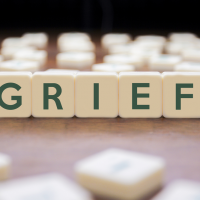Look for Symptoms Instead of Stages

When people think about dealing with the loss of a loved one, most people will consider the five stages of grief at some point. This system was created by a Swiss-American psychiatrist named Elisabeth Kübler-Ross in 1969. In her ground-breaking book, On Death and Dying, the world was first introduced to the five stages of grief – denial, anger, bargaining, depression, and acceptance. For almost 50 years, this has been the gold standard for dealing with grief. However, some grief experts are starting to move away from this model.
While the five stages have been incredibly helpful for people experiencing loss, the method has become so widespread that people have started to misuse it. The word “stages” suggests that grief is a linear process with a predictable path. There are certainly common emotions and conditions shared by those dealing with a loss, but that doesn’t mean grief will always take the same path.
Instead of trying to figure out what stage you’re in, just be aware of the symptoms of grief and treat them as they come. Grief will affect every aspect of your life, and it’s normal to experience physical, emotional, and spiritual symptoms. Knowing what these symptoms look like will help you treat them and ultimately get past them.
Physical Symptoms of Grief
- Trouble sleeping
- Fatigue
- Weight changes
- Headaches
- Muscle tension
- Decreased immune system
Emotional Symptoms of Grief
- Low self-esteem
- Indecisiveness
- Negative thoughts
- Trouble concentrating
- Thinking you are responsible for the loss
- Nightmares
- Paranoia
- Feeling isolated
Spiritual Symptoms of Grief
- Questioning your beliefs
- Being angry at God
- Questioning your purpose
- Feeling abandoned
These symptoms could very well follow the traditional five stages, but treating symptoms as they come will likely be more helpful than trying to pinpoint which stage you’re at. Use the five stages as a guide, but don’t feel tied to them. Most importantly, don’t be afraid to get help if you need it. Grief counseling or support groups can be incredibly helpful.

